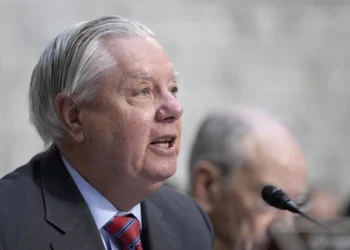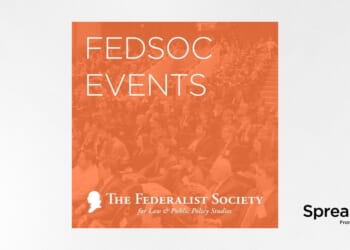A strong case can be made that the best decision President George W. Bush ever made was to nominate the rock-ribbed Samuel Alito to replace Associate Justice Sandra Day O’Connor on the Supreme Court in 2005.
Interestingly, though, it came directly on the heels of one of the worst decisions Bush ever made — that of first nominating a crony and a judicial lightweight named Harriet Miers to replace O’Connor. The outrage among Republicans was such that Miers became just the second nominee since the Grant administration to have her nomination withdrawn.
Miers’s misfortune, though, was Liberty’s luck, as Bush moved quickly to placate his conservative base with a real nominee, a demonstrably conservative nominee. That was Samuel Anthony Alito Jr.
Earlier this month, Justice Alito, the high court’s third-most senior justice, sat for an hour-long interview with the Hoover Institution’s Peter Robinson, during which he spoke about the activist Warren Court, the history of originalism and constitutional theory, the professorial nature of Antonin Scalia, Dobbs, the Equal Protection Clause, the limits of judicial power, the problems with race-conscious policies, the flaws of the “Bostock decision, and much more.
The interview was wide-ranging, but its most compelling moments came when Alito addressed the volatile issues of race and racial discrimination, which the Left has weaponized over the years via its perversion of the Civil Rights Act of 1964 and its willful disregard of the Constitution’s Equal Protection clause, but which the Roberts Court has since been clawing back.
“Slavery and racial discrimination,” Alito said, “was the great flaw that was built into our constitutional system at the start with the three-fifths clause, the clause that [allowed] the slave trade to continue for 20 years, and it has taken us a long time to work through these problems. So the court was horrible in Dred Scott, of course, and may have contributed to the outbreak of the Civil War. Then along came a case called Plessy v. Ferguson, 1896, at a time when social Darwinism and sort of scientific racism among the elites was at its peak, and the court said that racial segregation was constitutional.”
At this point, Alito made a remarkable statement — a statement that tells us everything we need to know about his moral compass and about which side, right or left, is fighting for a colorblind society. In referring to Plessy, Alito mentioned Associate Justice John Marshall Harlan, who he said “wrote the best dissent in the whole history of the Supreme Court in that case … where he said that in our country, there’s no superior race, there are no castes, the Constitution is colorblind. He was all alone. … He was a Southerner, and he came from a slave-owning family. But he was courageous and made that argument, which of course was true and has stood the test of time.”
Of all the many thousands of utterances made by our Supreme Court justices over many hundreds of cases, that particular statement from Justice Harlan is the one that Alito singles out.
Alito noted that Plessy was “finally” overturned — more than a half-century later — in the 1954 Brown v. Board of Education case, which reaffirmed Harlan’s dissent in Plessy and which laid the framework for Martin Luther King Jr.‘s “I Have a Dream” speech at the Washington Monument in 1963. Alito then quoted King: “I look forward to the day when my little children are judged not by the color of their skin but by the content of their character.”
Alito then observed that the court “did some backsliding” in the 1978 Bakke case, in which the justices tried to thread a needle by saying that Affirmative Action was constitutional but racial quotas were not. “I think it was well-intentioned,” he said. “It was perhaps thought that this was something that should be done for a period of time to try to get over the aftereffects of a long period of segregation and discrimination, but the precedent lasted, and it metastasized, and I think it came to do great damage to our society.”
That damage continued into 2003 and beyond, with the court’s weak-kneed *Grutter v. Bollinger” decision, in which Justice Sandra Day O’Connor wrote, weirdly, that “race-conscious admissions policies must be limited in time,” while adding that the court “expects that 25 years from now, the use of racial preferences will no longer be necessary to further the interest approved today.”
It took the court another 20 years to recover from Grutter, when in 2023 the high court ruled in Students for Free Admissions v. Harvard that the university, in taking race into account during its admissions process, had violated both the 14th Amendment’s Equal Protection clause and the Civil Rights Act of 1964. Host Peter Robinson then quoted the essential words of Chief Justice Roberts’s majority opinion: “Eliminating racial discrimination means eliminating all of it.”
Here, though, Alito expressed his frustration that the lower courts have been reluctant to consistently apply the Students for Fair Admission decision to recent race-based admissions cases before adding, “And if they don’t do it, then I think we’re gonna have to intervene as many times as is required to drive the point home.”
Robinson then moved on to the First Amendment guarantee of freedom of religion, recounting what Alito had said while speaking at Notre Dame a couple of years ago: “Freedom of worship means freedom to practice religion in the privacy of your home, or in your church or your synagogue or your mosque. But when you step outside into the public square, in the light of day, you had better behave yourself like a good secular citizen. That’s the problem that we face.”
Alito responded: “Support for religious liberty, unfortunately, has cratered in the last 20, 25 years. The high point, I would say, was 1996, when Congress passed the Religious Freedom Restoration Act.” Why did Congress do so? Because it believed that a recent Supreme Court decision hadn’t gone far enough to protect religious liberty, and it wanted to explicitly codify this protection in law. Imagine that.
That law, said Alito, passed with a voice vote in the House, and with 97 votes in the Senate, and was “signed happily” by President Bill Clinton. Does anyone think such a law could gain such overwhelming bipartisan approval today? Alito provided the answer: “In 2015, the state of Indiana enacts virtually an identical law, and there’s furious opposition. The NFL, the NBA, the WNBA, the NCAA all threatened that they’re gonna pull games out of Indiana,” while states said that they wouldn’t allow any official travel to conferences in Indiana.
It’s hard — indeed, it’s impossible — to explain such a head-snapping switch of popular sentiment without considering the wild success of the Rainbow Mafia’s decades-long PR campaign — a campaign that has since wildly overreached with its foray into the cult of transgenderism. Alito never mentioned this, and rightly so. “But,” he said, “I think that protection of religious liberty is required by our Constitution. And it’s again, like equality, it is essential for the well-being of the country.”
Robinson asked Alito how the Supreme Court handles these moments, and these cases, in which public support for a fundamental constitutional principle might be “cratering.” Alito said it’s important for the high court to “stand up for the Constitution,” adding, “There’s a reason why we’re not elected.”
Alito continued: “We are not supposed to do what is popular. We’re supposed to do what is right.”
And that statement is, in a nutshell, why we’re lucky to have Justice Samuel Alito defending our Constitution and our essential liberties.















